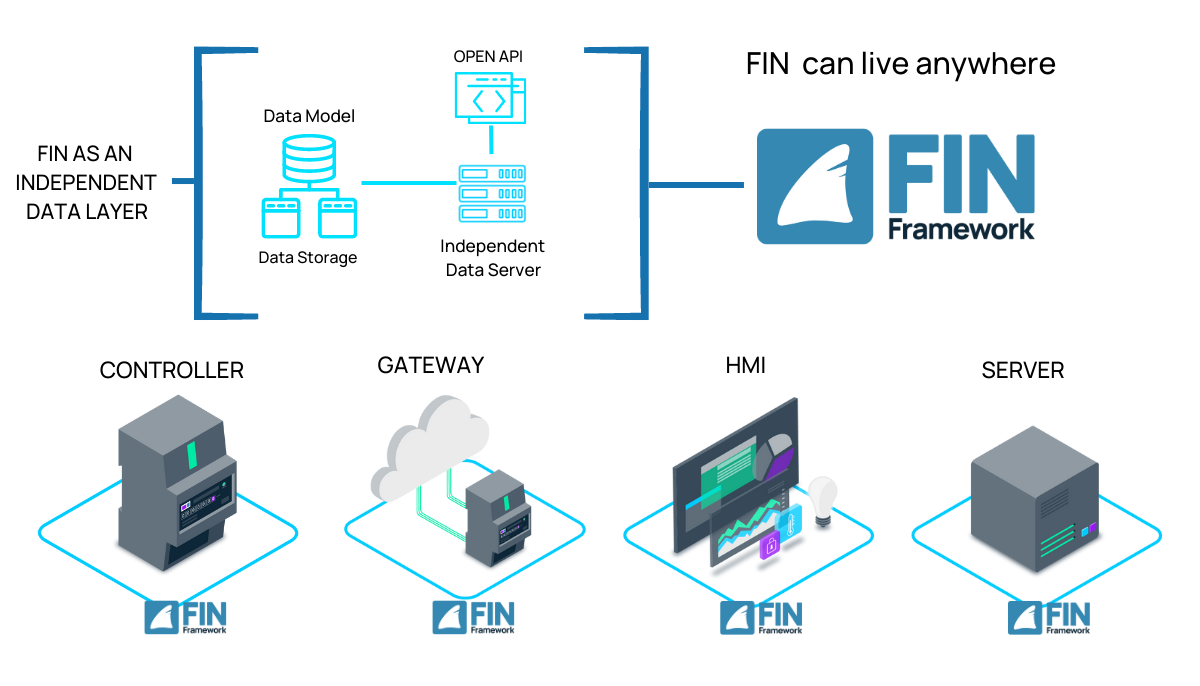The home of smart buildings, smart equipment and IoT
In our first blog post, we covered both open device standards and open data standards in smart buildings. These standards emerged to solve the challenges caused proprietary solutions typically found in legacy systems. Our second blog post discussed how today’s buildings have many connected and intelligent devices across multiple subsystems. These systems now communicate utilizing open protocols but are typically siloed into verticals. One possible solution was a Single Pane of Glass (SPoG) approach to unify these systems under one application suite. Looking toward the ultimate goal, in our third blog post, we discussed how applications, data, and devices are all brought together for a better understanding of the entire building. Opening the door for new killer applications such as analytics and artificial intelligence independent of the data's original source.
The need for integration of devices and subsystems that speak multiple protocols is a core competency of a modern building automation system.This integration layer takes care of translating both the mismatch of the electrical signal and the communication protocol on the wire. By design, the FIN Framework is a device integration platform that can talk multiple open protocols (BACnet, Modbus, KNX) through its connector framework. The magic happens when the connected protocols get normalized to a common model, which is based on the Project Haystack Standard (this is unique to FIN).
Now that we've normalized the real world, the data looks and feels the same independent of its source, we can apply standard applications to provide value from this information. When it's inherently built on Project Haystack Standard, and embraces tagging and data models, new and exciting functionality becomes reality. In the FIN Framework, for example, much of the user experience is automatically generated. For example, the navigation, point graphics, and hyperlinks get created by the application in contrast to the time consuming manual engineering previously required. The payoffs of utilizing tagging and data models extend beyond just graphics and inherently can automate other functions of a smart building, such as control, alarming, analytics, and more. For more detailed examples, check out our white paper: The Strategy and Payoffs of Tagging.
A viable solution for today's smart buildings that is organized by silos of subsystems (HVAC, lighting, energy...) is to bring them all together using a Single Pane of Glass (SPoG) approach. This integrates multiple vertical systems, typically speaking multiple protocols into a consistent normalized data set.
As we learned previously, FIN Framework does a great job normalizing data and is a comprehensive suite of apps that can be used across silos or systems to create dashboards, visualization, alarms, histories, scheduling, control, graphics, and favorites. This collection of apps is powerful enough to efficiently supervise and control most intelligent buildings.
Beyond the SPoG, there lies an exciting architecture where all data is normalized, and the ecosystem is creating new killer apps to take the data to the next level. These new apps will seamlessly query and access the data via open APIs and data standards such as Project Haystack. As we've learned, the FIN Framework has created this independent data layer and is based on an open data standard. This means that FIN projects are ready to serve up tagged data, thus future proofing the system for additional applications. One of the unique features of FIN Framework is that it can reside on an edge controller, in a gateway, a server, or in the cloud. This means that FIN makes available an independent data server at multiple levels of the architecture.

The FIN Framework delivers open device standards and open data standards in smart buildings. It can be used in today’s buildings to connect intelligent devices across multiple subsystems. FIN provides an integration and application platform ideally suited for a Single Pane of Glass (SPoG) approach to unifying systems under one application suite. Because the FIN Framework is inherently built on both an integration and normalization technology, it is ideally suited as an independent data layer. With FIN, the data, devices, and applications are all brought together for a better management of smart buildings, smart equipment, and the IoT.
Scott joined J2 Innovations as a partner in 2011 and is now Vice President of Knowledge Excellence. He has a wide range of responsibilities, including evangelism, business development and training. Scott is well known as an industry expert in smart homes and smart buildings. He is a past president of ASHRAE, and is currently a board member for Project Haystack. Scott attended Clarkson University for Mechanical Engineering and graduated with a BS/Business in Organizational Innovation.
Topics from this blog: Project Haystack FIN Framework Technology FIN Supervisory and Control Single Pane of Glass
Back to all posts
J2 Innovations Headquarters, 535 Anton Blvd, Suite 1200, Costa Mesa, CA 92626, USA. Tel: 909-217-7040